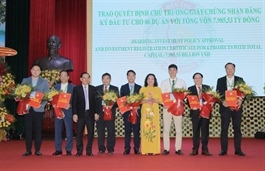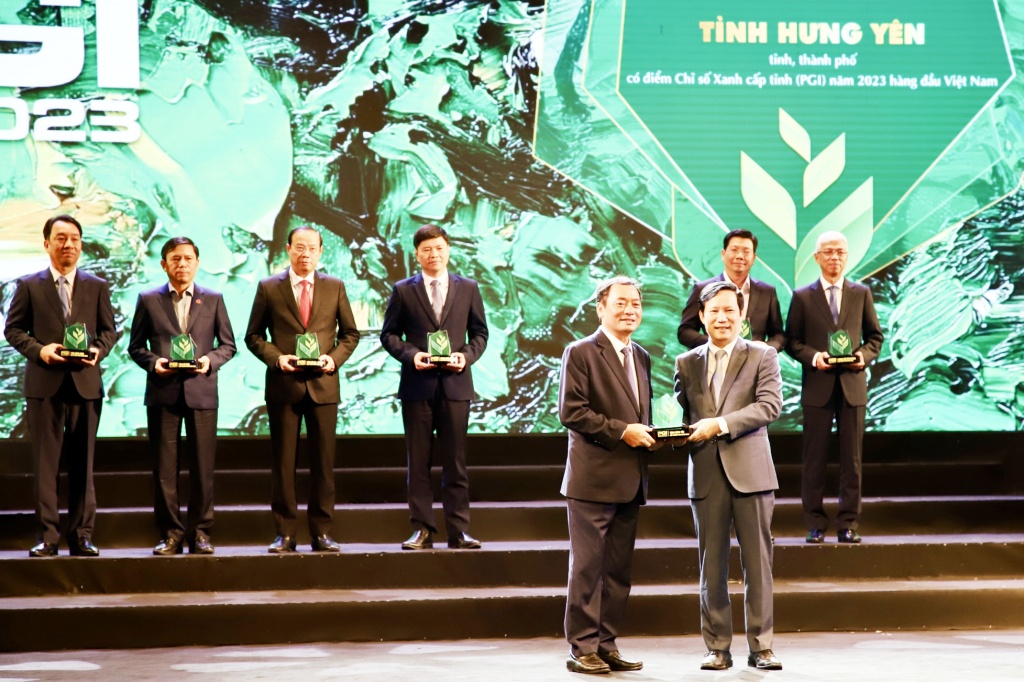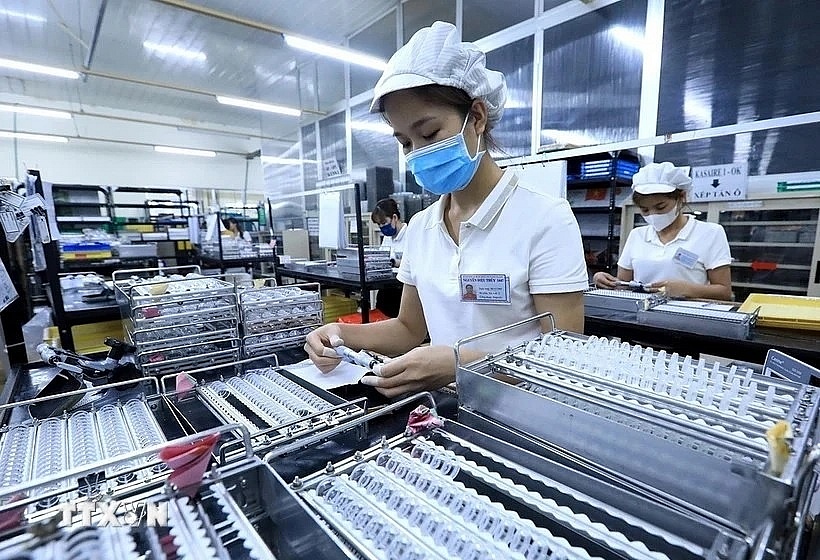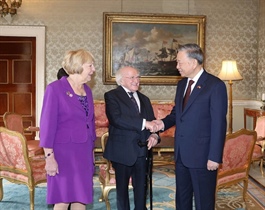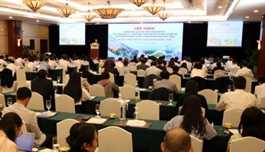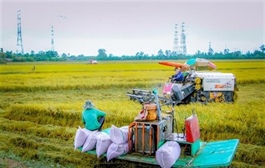Hà Nội drives circular and innovative growth for sustainable future
Hà Nội drives circular and innovative growth for sustainable future
As Hà Nội celebrates the 70th anniversary of its liberation this month, the city stands at a pivotal juncture, ready to embrace a future defined by green, innovative, and sustainable economic growth. This vision reflects not only the aspirations of the capital but also aligns with global trends towards sustainable development, positioning Hà Nội as a leader in addressing modern economic and environmental challenges.

DEVELOPMENT JOURNEY: The Cát Linh-Hà Đông elevated railway, Hà Nội's first elevated railway which began operation in 2021.VNA/VNS Tuấn Anh |
70 years of development milestones
Since its liberation on October 10, 1954, Hà Nội has undergone an impressive transformation. From a war-torn city of around 430,000 inhabitants, it has grown into a vibrant metropolis, now the second-largest urban area in the country after HCM City, with an estimated population of nearly 10 million people.
According to the Hà Nội Statistics Office, the city's Gross Regional Domestic Product (GRDP) witnessed an average annual growth of 6.67 per cent between 2011 and 2023, surpassing the national average during this period. In the first half of 2024, the GRDP was estimated to have grown by 6 per cent.
The industrial and construction sectors account for about 16 per cent of the city’s total output, progressing in high-tech areas such as automation and biotechnology.
Infrastructure development remains a priority in Hà Nội, with projects like Ring Road 4, Pháp Vân–Cầu Giẽ Highway, and Thăng Long Boulevard enhancing regional connectivity and economic growth. This infrastructure positions Hà Nội as a vital hub for industrial development and foreign investment.
Hà Nội has long been one of Việt Nam's top five localities for Foreign Direct Investment (FDI). Over 4,500 foreign-invested projects have been launched in the city, with registered capital exceeding US$33 billion. These businesses contribute 10 per cent of the city’s budget revenue and employ 11 per cent of its workforce.
From 2011 to 2023, Hà Nội’s exports grew at an average annual rate of 4.57 per cent, representing nearly 9 per cent of Việt Nam's total trade in 2023 and ranking 8th nationwide.
Tourism is also a key sector, with the city welcoming 24 million visitors in 2023, including four million international tourists. By August 2024, international arrivals had increased by 42 per cent year-on-year.
Despite accounting for just 1 per cent of Việt Nam's land and housing 8.5 per cent of its population, Hà Nội contributes 16 per cent of the country’s GDP, 18.5 per cent of its budget revenue, and 20 per cent of its domestic income, underscoring its central role in both the Red River Delta and the nation as a whole.
Hà Nội's future: High-tech and innovation

FOCUS: An electronic component production line at Synopex Vietnam Co., Ltd. (South Korean investment) in Quang Minh Industrial Park (Hà Nội). VNA/VNS Photo Danh Lam |
As Việt Nam moves towards sustainable growth, science, technology, and innovation have become critical components of its development strategy. The Hòa Lạc Hi-Tech Park has attracted over 300 investment projects worth $8 billion. The city has also pioneered smart city initiatives, integrating AI, big data, and the Internet of Things into urban management, transportation, and healthcare systems, thereby enhancing its competitiveness.
According to Deputy Minister of Science and Technology Hoàng Minh, Việt Nam's economic growth increasingly relies on technological applications and innovation rather than the exploitation of natural resources. This shift is essential for boosting productivity and enhancing the competitiveness of domestic enterprises.
To renew its economic engine, Hà Nội has laid out a comprehensive roadmap. The city’s development goals, as outlined in Resolution No. 15-NQ/TW issued in May 2022, include achieving a GRDP growth rate of 8-8.5 per cent annually from 2026 to 2030 and raising per capita GRDP to $12,000-$13,000 by 2030. By 2045, Hà Nội aims for per capita GRDP to exceed $36,000.
To solidify its role as Việt Nam's political, economic, and cultural hub, Hà Nội is implementing the Capital Law 2024. Experts suggest the city should leverage this law and supportive policies to unlock its full potential for economic and social growth.
According to Lê Hồng Sơn, Vice Chairman of the Hà Nội People's Committee, Hà Nội is home to over 70 per cent of the country’s scientific organisations and 82 per cent of its laboratories, providing a strong foundation for innovation. The amended Capital Law aims to resolve obstacles and support the development of high-tech zones, innovation centres, and advanced business models, while enabling the establishment of enterprises from public scientific organisations.
“Additionally, the law will introduce a controlled experimental mechanism (sandbox) to facilitate rapid access to new technologies and promote startups,” Sơn said.
Digital and green economies
A key element of Hà Nội’s strategy is the development of the digital and green economies. The city’s digital transformation programme, set to run until 2030, aims to position Hà Nội as the nation’s innovation hub, with the digital economy contributing over 40 per cent of the city’s GRDP.
A study by the National Economics University shows that Hà Nội's digital economy contributes 23.5 per cent to its GDP, surpassing HCM City's 14 per cent. In 2023, the Ministry of Information and Communications reported that Hà Nội's digital economy made up 17.5 per cent of the national total. However, the city ranks 6th out of 63 provinces in digital economy contributions.
The growth of the digital economy has increased the share of high-tech industries in Hà Nội’s economic structure, with these sectors now accounting for over 60 per cent of the city’s industrial output. Labour productivity has risen by over 5.3 per cent annually, indicating a shift from extensive to intensive economic growth.
For Hà Nội, transitioning to a circular economy is not just an aspiration but a necessity. A circular economy prioritises resource efficiency, reduces waste, and promotes the recycling and reuse of materials. This approach aligns with the city’s broader goals of sustainable development and environmental protection.
Nguyễn Hoàng, Chairman of the Hà Nội Association of Supporting Industries, emphasised that to develop a circular and sustainable economy, Hà Nội must capitalise on its unique strengths and draw on international experience. He suggested the city should carefully study the United Nations’ 17 Sustainable Development Goals and models from capitals in Asia and Northern Europe to create a suitable programme and framework.
“Hà Nội should fund research and implementation across all sectors, establish clear pathways for each industry, and communicate effectively with residents and workers. A circular economy promotes sustainability, cleanliness, improved living conditions, longevity, health, and a higher standard of living for all in Hà Nội,” Hoàng said.
He also suggested the city establish a Sustainable Socio-Economic Development Council, inviting experts and businesses to participate in the implementation process.
Former Deputy Director of the Việt Nam Industry and Trade Information Centre under the Ministry of Industry and Trade, Lê Quốc Phương, noted that eco-industrial parks were now a top choice for foreign investors, focusing on sustainable development that balances economic benefits with social responsibility. He said Hà Nội should prioritise creating a transparent investment environment and developing green, smart, and convenient industrial parks rather than relying solely on tax incentives. Improving infrastructure to meet investor standards would also be essential.
Developing a green and circular economy requires a solid policy framework and cleaner models, as current policies are limited and implementation conditions inadequate. Economist Dr. Đinh Trọng Thịnh pointed out that a lack of planning and insufficient coordination among businesses are hindering efforts to minimise resource use and improve economic efficiency.
He stressed the importance of raising awareness, focusing on enhancing energy efficiency in production rather than relying solely on costly new technologies. Training should begin at the secondary education level to instil green principles early. Transitioning to a green economy requires significant financial resources, posing challenges for the 98 per cent of small and medium-sized enterprises.
“The government must implement support mechanisms, such as green product labelling and certifications, and assist banks in providing green investment loans while utilising international resources for the green transition,” Thịnh said.
Hà Nội is on the brink of a new era, where sustainable and circular development is central to its vision. As the city accelerates its transition to green and clean economic models, the focus on circular development will be vital.



